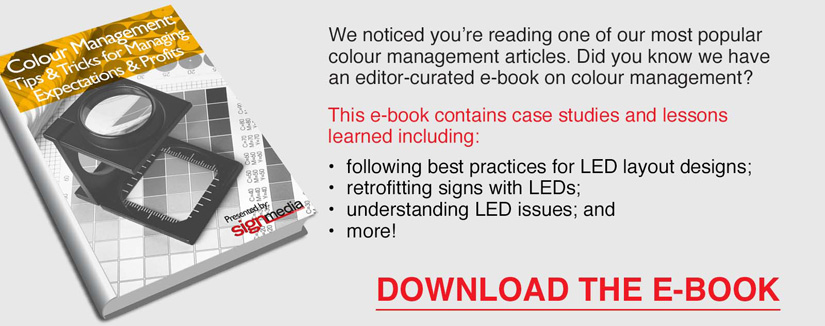Buying the right printer
by all | 12 February 2014 10:21 am
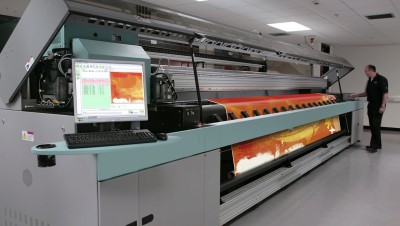 [1]
[1]Photos courtesy Fujifilm Canada
By Tony Karg
The question of which wide-format printing system to buy depends on the business of the buyer. Print service providers (PSPs) that specialize in producing catalogues and sell sheets are still best-served by offset printing, for example, while those focusing on direct mail will benefit from variable data printing (VDP). Display graphics inkjet printers, meanwhile, not only serve the sign industry with banners, point-of-purchase (POP) graphics, posters and ‘window clings,’ but can also handle smaller-format applications, like counter mats, decals and stickers.
Signmakers must therefore start by asking which business they are in and which they want to be in. Display graphics printers vary greatly in terms of quality, format (e.g. stand-alone printer or hybrid press), size, speed, ink type and labour automation, all of which help determine their ideal output.
Outdoor banners
Printed banners for outdoor installation are created using scrim banner vinyl, where a cotton or synthetic weave is embedded into vinyl to reinforce its strength. Common weights of these materials vary from 369 to 510 g (13 to 18 oz) per 0.8 m2 (1 sq yd).
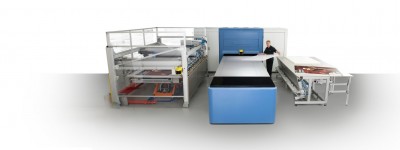 [2]
[2]Signmakers need to consider the scale of display graphics they expect to produce in the future.
The material is a good fit for today’s outdoor-graphics printers, as it will last one to three years outdoors without needing overlamination. Finishing does, however, involve taping, sewing or welding the outer edges to prevent tearing. Grommets may be inserted for installation or pole pockets created to allow the insertion of dowels for hanging banners.
Indoor banners
Printed banners for indoor installations are relatively similar to their outdoor counterparts. The outer edges are taped, sewn or welded and pole pockets may be added for hanging. They are also a good fit for today’s outdoor-graphics printers, achieving one- to three-year durability with no need for overlamination.
The material is somewhat different, however. A smooth scrim banner vinyl, designed to reduce glare from reflected light, will commonly only weigh between 170 and 283 g (6 and 10 oz) per 0.8 m2 (1 sq yd). It can also be delivered to retailers and other clients in a banner stand for easy installation.
Trade show and event graphics
It is common to print, overlaminate, roll up and ship wide-format inkjet graphics for trade shows and other events. A pebble-finish surface will cut glare from bright show lights, while an opaque backing can help the printed colours show through brilliantly.
For a ‘dressier’ look, however, prints are often mounted on foamboard and then overlaminated. They cannot be rolled up, but often the perfectly flat appearance is desirable.
Given these production and finishing options, trade show and event graphics can be printed on a wide variety of inkjet presses. Fabric graphics are gaining some favour, however, as they are more durable—and less expensive to ship—from show to show.
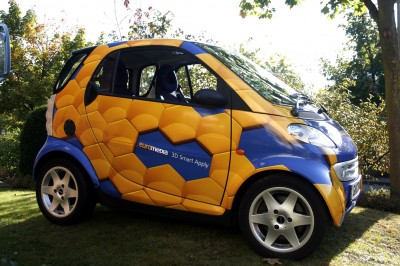 [3]
[3]The range of inks that can be used for vehicle graphics has grown.
POP displays
In retail environments, colourful, eye-catching posters are used very successfully to promote products. Given their size, they can be printed on a broad variety of presses, from digital offset printers to grand-format flatbeds.
Some POP signs are smaller, including ‘shelf talkers,’ which sit next to promoted products on shelves, and counter cards, which stand near cash registers. Others are larger, like floor displays—sometimes referred to as ‘dumps’—and end-cap merchandising displays at the end of each aisle, fabricated out of card stock.
Backlit signage
With poster-size printers and up, colourful graphics can be produced for backlit applications, including menu boards and illuminated posters. These are common at movie theatres, shopping centres, banks, airports and casinos, among other locations.
Specialty graphics
In addition to the aforementioned ‘traditional’ applications, specialty graphics can be produced using the same printers. A large-format digital inkjet printer, for example, can create floor graphics, window graphics, wallcoverings, decals and labels.
Vehicle graphics
Compared to other forms of advertising, vehicle wraps and fleet graphics reportedly represent the lowest cost-per-impression. Delivery vehicles, cars, trucks and vans can all promote a company’s name, products and services.
Given their size, vehicle wraps can only be produced using large-format display graphics printers, but today the range of inks that can be used for this purpose has grown.
Key considerations
Knowing which applications will be printed is just the beginning, as there are many other differences between printers to consider before buying one.
One of the key considerations is the flexibility of output. A hybrid machine can handle both flatbed and roll-to-roll printing, but the sign shop needs to determine whether not doing so will be realistic. In many cases, a single printer is instead dedicated to one task.
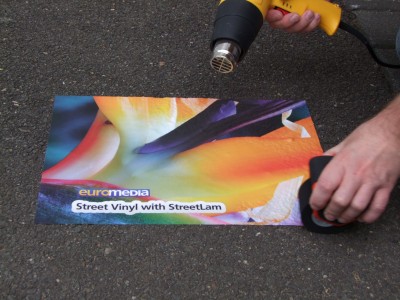 [4]
[4]A large-format digital inkjet printer can create many specialty products, including outdoor street graphics.
The roll or flatbed size should be matched to the sign shop’s common output sizes, while also checking substrates are available in the specified format. Limiting width will help minimize waste of consumables. With a flatbed printer, zoning and vacuums can also reduce setup time.
Another factor for efficiency and cost is labour automation. Many of today’s large-format inkjet printer workflows are designed to integrate or reduce the number of production steps, along with post-print finishing. As a result, a single operator can now drive multiple devices.
The quality of output will also vary by printer, including outdoor durability, clear viewing distances and environmental factors like offgassing of solvents. It is important to check the actual quality of a printer’s graphics and not simply trust marketing hype.
Similarly, speed is a major consideration in today’s competitive market. Before buying a printer, it is important to calculate its real output production in square metres per hour with the necessary substrate size and image quality. Maintenance requirements will also come into play, as downtime will affect overall speed.
Ink adhesion and durability should be checked on the chosen substrates. Some inks offer a greater colour range than others, but given the associated costs of complicated configurations—including purging inkjets—it is best to buy the least number of colours needed to do the job. And if a shop is comparing original equipment manufacturer (OEM) and aftermarket inks, it will be important to test both options.
A time of change
Canadian PSPs and signmakers are leading the charge in acquiring and using new wide-format printing devices. Most screenprinting companies in Canada, for example, have already adopted digital technologies. Those who still have screen equipment are, for the most part, shutting down those parts of their business. Year-over-year growth continues to be very strong at the industrial wide-format level.
Traditional commercial printing companies are entering this marketplace as part of their diversification strategies, so competition is growing with sign shops, traditional screenprinters and POP display providers. This competition is hurting profit margins, which is why shops are looking to increased automation and other ways to reduce their costs.
Tony Karg is Fujifilm Canada’s senior director of corporate communications and marketing for graphics systems, based in Mississauga, Ont. For more information, contact him via e-mail at tkarg@fujifilm.com[5].
- [Image]: http://www.signmedia.ca/wp-content/uploads/2014/02/Uvistar-2.jpg
- [Image]: http://www.signmedia.ca/wp-content/uploads/2014/02/Onset-front-view-2.jpg
- [Image]: http://www.signmedia.ca/wp-content/uploads/2014/02/3D-Smart-Apply.jpg
- [Image]: http://www.signmedia.ca/wp-content/uploads/2014/02/StreetVinyl2.jpg
- tkarg@fujifilm.com: mailto:%20tkarg@fujifilm.com
Source URL: https://www.signmedia.ca/buying-the-right-printer/
